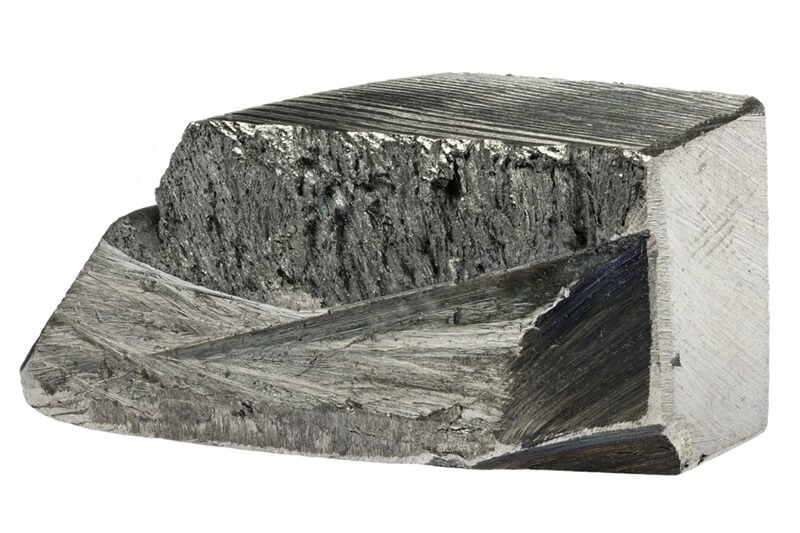
Some materials quietly shape entire industries without most people ever noticing. Industrial minerals like neodymium and dysprosium belong to that group. They aren’t flashy like gold or oil, but they sit at the center of today’s biggest transformations—electric vehicles, renewable energy, defense, and advanced electronics.
The neodymium element gives us incredibly strong magnets. The dysprosium element makes those same magnets stable at high temperatures. Put together, they’ve become the backbone of technologies that define our era.
Let’s break down why these two industrial minerals matter, how they’re used, and what the future looks like for industries depending on them.
Think of what could be the secret force behind tiny yet strong magnets. The element Neodymium belongs to the group of rare earth elements and is essential to produce Neodymium-Iron-Boron (NdFeB) magnets.
These magnets hold the title of being the strongest in the world, way stronger than ferrite or alnico magnets. The strength is what makes these magnets necessary from car motors to medical equipment. Many modern-day devices would neither be as efficient nor as high-performing without neodymium.
Explore more: Copper Minerals: Essential for Industry & Mining Growth
Dysprosium has another equally important role to play. By itself, dysprosium is not so much in the limelight, but when added to NdFeB magnets, it changes the whole story. It gives magnets thermal stability, which is very much needed in the operation of electric vehicle motors, offshore wind turbines, and aerospace systems.
Without dysprosium, magnets lose their holding capacity when exposed to elevated temperature conditions, while with it, they remain efficient and reliable. That is why industries consider Dysprosium as amongst the most strategic industrial minerals.

Both the neodymium element and dysprosium element are considered irreplaceable for a few reasons:
It’s not just about convenience. Without these industrial minerals, entire industries would slow down.
Demand for these materials is climbing at record speed. Global targets for clean energy and electric vehicles are pushing industries to secure more supply of the neodymium element and dysprosium element.
Market studies show the rare earth metals market is on track to hit billions in the next decade, with neodymium and dysprosium leading the surge. Every EV motor needs neodymium magnets strengthened by dysprosium. Every new offshore wind turbine depends on them for long-term performance.
This isn’t a temporary trend—it’s a structural shift in how industries operate.
There is the catch: mining and refining are mostly carried out in China. With more than 60% of the world's production and almost 90% of the refining capacity in the country's control, the industrial minerals supply chain is vulnerable to any political change or export ban that may cause prices to swing dramatically
For example:
That’s why other countries, including the U.S., India, and Australia, are investing heavily in new mining projects, recycling, and stockpiling strategies.
Also read: Industrial Minerals: Global Market Shifts & Future Trends
Because these materials are so critical, companies are finding ways to reduce dependence on new mining. Recycling magnets from discarded electronics or motors has become a major focus. Some firms have already developed large-scale recycling systems that recover both neodymium and dysprosium.
On top of that, research is pushing for more efficient extraction methods and possible substitutes, though nothing fully replaces the neodymium element and dysprosium element yet. Recycling remains the most realistic way to ease pressure on supply chains.
Mining rare earth elements is an ugly affair. It generates toxic slag and in some cases radioactive by-products. Thus, the environmental footprint of industrial minerals such as neodymium and dysprosium is a critical point of concern. We must now look at cleaner mining, sustainable processing, and rigorous environmental laws as a must.
There is a strategic angle to this too. Today, governments label neodymium and dysprosium as "critical minerals." They are paramount for national security, hence cannot be ignored. The defense system...satellites...advanced communication tools-their green technologies are just as beholden to these rare earths.
Electronic gadgets containing these minerals acquire paramount importance in daily life:
These are not niche applications—they touch almost every sector in modern life.
Looking ahead, demand for the neodymium element and dysprosium element will only rise. Electric mobility and renewable energy targets leave no doubt. The question isn’t whether industries need them, it’s whether they can secure enough supply at stable prices.
Expect to see:
Discover More: Understanding Bentonite and Its Properties, Types and Uses
Neodymium and dysprosium might not be household words; however, they have really given a modern way to run technology. In case you've at all time wondered what is neodymium, it is the name given to powerful magnets that enable advanced technology to work. The neodymium element imparts unmatched magnetic strength. The dysprosium element makes sure that strength stays put under pressure.
Together, these industrial minerals form the backbone of industries shaping our future. From EVs and wind energy to defense and electronics, their role is only expanding. And as the world moves deeper into the clean energy era, their importance will grow even further.
This content was created by AI